What are the steps involved in the Elliptic Curve Diffie-Hellman (ECDH) key exchange protocol?
The Elliptic Curve Diffie-Hellman (ECDH) key exchange protocol is a variant of the Diffie-Hellman protocol that leverages the mathematical properties of elliptic curves to provide a more efficient and secure method of key exchange. The protocol enables two parties to establish a shared secret over an insecure channel, which can then be used to encrypt
In the context of elliptic curve cryptography (ECC), how does the elliptic curve discrete logarithm problem (ECDLP) compare to the classical discrete logarithm problem in terms of security and efficiency, and why are elliptic curves preferred in modern cryptographic applications?
Elliptic Curve Cryptography (ECC) represents a significant advancement in the field of public-key cryptography, leveraging the mathematics of elliptic curves to provide robust security. Central to the security of ECC is the Elliptic Curve Discrete Logarithm Problem (ECDLP), which is a specialized variant of the classical Discrete Logarithm Problem (DLP). The comparison between ECDLP and
How does a stream cipher differ from a block cipher in terms of data encryption?
Stream ciphers and block ciphers are two fundamental types of symmetric key encryption methods used in the field of cryptography to secure data. Both have distinct operational mechanisms and use cases, making them suitable for different scenarios. A stream cipher encrypts plaintext one bit or byte at a time, typically by combining it with a
What are the manual steps involved in backing up a WordPress site, including both files and the database?
Backing up a WordPress site is an essential task for any website owner or administrator. This procedure ensures that you have a copy of your website's files and database, which can be restored in case of data loss, hacking, or other issues. The manual steps involved in backing up a WordPress site encompass both the
- Published in Web Development, EITC/WD/WPF WordPress Fundamentals, Customization, plugins, and settings, Moving a WordPress site, Examination review
What is the purpose of the Site Health tool in WordPress, and what types of issues does it typically identify?
The Site Health tool in WordPress serves as a comprehensive diagnostic utility designed to help site administrators and developers maintain and improve the performance, security, and overall health of their WordPress installations. Introduced in WordPress 5.2, this tool provides both an overview of the site's current status and actionable recommendations to address identified issues. The
- Published in Web Development, EITC/WD/WPF WordPress Fundamentals, Customization, plugins, and settings, Moving a WordPress site, Examination review
What are the different user roles available in WordPress, and what permissions does each role have?
In the realm of WordPress, user roles are fundamental components that define the capabilities and permissions of each user within a WordPress site. These roles facilitate the management of user access and ensure proper governance of content and administrative functions. WordPress, by default, provides six primary user roles: Super Admin, Administrator, Editor, Author, Contributor, and
- Published in Web Development, EITC/WD/WPF WordPress Fundamentals, Customization, plugins, and settings, Adding and managing users, Examination review
How can you view and edit the profile of the admin user in WordPress, and what types of information can be modified?
To view and edit the profile of the admin user in WordPress, one must navigate through the WordPress Dashboard, which serves as the central hub for managing and customizing a WordPress site. The process involves several steps, each designed to ensure that the user can efficiently access and modify the necessary information. Accessing the Admin
What steps are involved in adding a new user to a WordPress site and assigning them a specific role?
To add a new user to a WordPress site and assign them a specific role, one must follow a series of methodical steps that ensure the user is correctly integrated into the system with the appropriate permissions. This process involves accessing the WordPress dashboard, navigating to the user management section, entering the necessary user information,
Why is it important to check the compatibility information of a plugin before installing it on your WordPress site?
When managing a WordPress site, the installation of plugins is a common practice to extend functionality, enhance performance, and add new features. However, it is crucial to check the compatibility information of a plugin before installing it. This practice ensures that the plugin will function correctly with your current WordPress setup and avoid potential conflicts
- Published in Web Development, EITC/WD/WPF WordPress Fundamentals, Customization, plugins, and settings, Working with plugins, Examination review


What is the role of Gravatars in the WordPress comment system and how are they managed?
Gravatars, short for "Globally Recognized Avatars," play a significant role in the WordPress comment system. They are a service provided by Automattic, the same company behind WordPress.com, and are designed to provide a consistent avatar for users across different websites and platforms. This service allows users to create an avatar that is tied to their